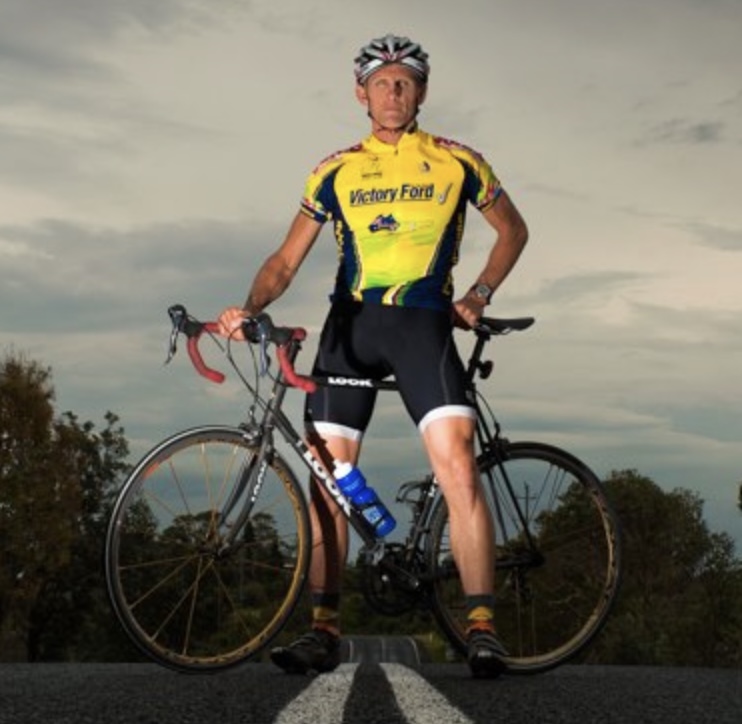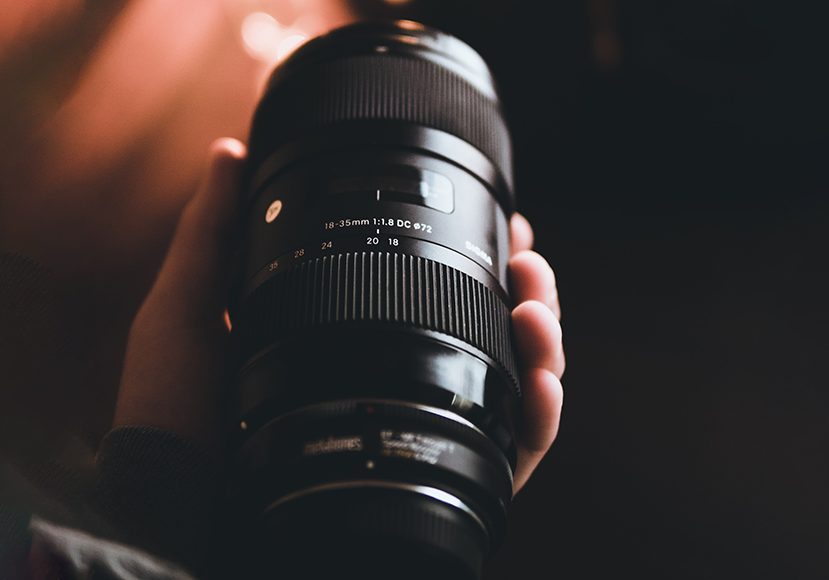
Best Lenses for Product Photography in 2023
Everything you need to know about choosing camera lenses for product photography, including the best lenses for Sony, Canon, Nikon, Fujifim, & Micro 4/3s.
This guide will take you through the best lenses for product photography.
Product photography is all about showing products in their best possible light.
As such, you need to think carefully about which lens or lenses to invest in.
Luckily, there are a ton of great product photography lenses out there for every camera system, photographer, and budget.
Let’s take a look at the must-have lenses for product photo sessions.
Table of Contents
What Do You Need in a Product Photography Lens?
The best lenses for product photography need to be sharp above all else.
You also need the lenses to create minimal distortion so that the product is represented properly.
It’s also important to be able to precisely control your focal point and your depth of field.
A lens with a large maximum aperture (e.g., f/1.8 or f/2.8) allows for more light and can provide a shallower depth of field, useful for creating a blurred background or bokeh.
As for focal length, depending on the size of the product and the space you’re shooting in, the focal length can vary.
Macro lenses are excellent for small products, allowing you to get closer to the subject and still maintain focus.
Something like a 50mm or 85mm prime or zoom lens might be more versatile for a range of products.
Something to note about our list of the top lenses for capturing product images: while we mostly discuss lenses with autofocus, you don’t actually need autofocus for product photography.
Choosing a good manual focus lens can save you quite a bit of money.
What is the Best Focal Length for Product Photography?
The best focal length for product photography depends on what you’re shooting.
If you need to show a lot of products in one image, you’ll struggle with a telephoto lens, so you’ll need a wide lens.
On the other hand, if you want to isolate a subject from its surroundings, you’ll need a telephoto or macro lens.
Longer focal lengths tend to work best in most product photography. Between 80mm and 200mm is ideal (with 100mm being the sweet spot), assuming of course you have the space to back up far enough and retain sharp focus.
Using these kinds of focal lengths will help you avoid the distortion that often arrives when using wide-angle lenses.
Macro lenses are great, especially for details. 90mm, 100mm and 105mm macros are excellent, and products will usually look natural when shot using those focal lengths.
Depending on your lighting set-up, you may need something like a 200mm or 180mm so you can stand far enough back, away from your lights.
Also, if you need to fit multiple products in one image, and your studio has the space, you can use primes with long focal lengths. Just stand further back.
What is the Best Aperture for Product Photography?
There is no ‘best’ aperture for product photography. You need to use the aperture that will allow you to get whatever you need to be in focus, in focus.
And if your brief needs you to control your depth of field, your lens aperture needs to allow you to do that.
Given that product photos are often taken with longer focal length primes, you’ll often need to use a higher aperture to make sure everything is in focus due to lens compression.
So, you don’t necessarily need a super-fast lens.
Having said that, the wider aperture your lens offers, the better off you’ll be.
You’ll have more latitude in low light, more opportunities to get creative with depth of field, and your lens will be of a higher optical quality.
And the better your lens, the better your product photographs will be.
Which Is Best for Product Photography: a Prime lens, a Zoom lens, Macro lens, or a Tilt-Shift Lens?
For shooting smaller products or when you are shooting in larger studios where you have room to move around, prime lenses are often best, as they are the best quality and create the sharpest images.
For example, while you can use a zoom lens for macro photography, it will certainly be less consistent when compared to a prime lens.
This is especially true for top-down shots that require the photographer to make composites.
A loose zoom ring can be a headache. It can slide, making unwelcome adjustments to your image and losing the focal point. If you do use a zoom lens, make sure it has a zoom lock you can use to stop any movement.
But, for anyone needing to shoot products of many different sizes and/or needing to shoot from many different angles and distances (and those shooting in a small studio), a zoom lens might be the way to go.
Macro lenses are generally of great optical quality and very useful for getting that much closer to the subject. They are great for taking high-resolution photos of very small products (i.e. ones that you can fit in your hand).
Tilt-shift lenses are, for professional product photographers, one of the best options, but they have a high learning curve and an even higher price.
That being said, they give you a phenomenal amount of control over the focal point and the perspective, allowing you to shoot your product not only from its best angle but also in a way that has zero distortion and is true to life.
Unfortunately, there are currently no native tilt-shift lenses for the Canon RF system, Nikon Z, Fujifilm or Sony FE. You can, however, get an adaptor and use Nikon F or Canon EF lenses.
Do I Need Image Stabilization When Shooting Product Photography?
Product photography is usually done with your camera on a tripod, so image stabilisation is not really needed.
Also, depending on which camera you use, the body may already have image stabilisation built-in.
If you’re on a budget, look for lenses that don’t have IS first.
Having said all this, built-in image stabilisation won’t hurt.
The essential component of product photography is that the images are razor-sharp, so any help you can get with this is welcome.
What Are the Best Lenses for Product Photography in 2023?
Here is a run-down of some of the best lenses for product photography by manufacturer.
Best Canon RF Lenses for Product Photography (Full-Frame)
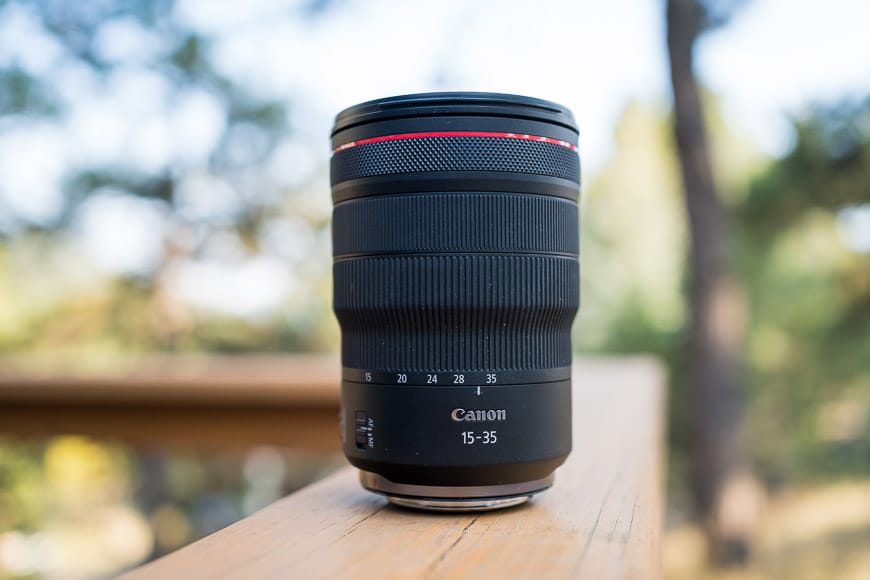
Credit: Marc Bergreen
Something to bear in mind with the RF lenses: there are no manual focus or tilt-shift lenses available yet. If you want to use one of these, you’ll need to get a Canon EF lens with an adaptor.
Canon RF 100mm f/2.8 Macro (Best All-Around)
This macro lens is very high-quality glass
It’s an excellent focal length for product photography, and the quality of image it provides is sharp.
It’s a fast lens, and that wide aperture allows you to create smooth background blur.
Canon RF 24-70mm f/2.8 L (Best Zoom)
Like its sibling EF lens for DSLRs, this workhorse is a photographer’s favourite.
The focal lengths and wide aperture give you a great amount of versatility and flexibility, while the images it creates are known for their sharpness across the frame and throughout the focal lengths.
Canon RF 85mm F2 Macro (Best Budget Prime)
This lens is an excellent choice for anyone looking for even more low-light capabilities and background (or foreground) blur from their product photography lens.
Image quality is excellent, sharp and with good contrast, and it’s a really perfect focal length for shooting products.
Best Nikon Z Lenses for Product Photography (Full-Frame)
If you want a manual lens and/or a tilt-shift lens you’ll need to use a Nikon F lens with an adaptor.
Nikon Z MC 105mm f/2.8 VR S Macro Lens (Best All Around)
Like the Canon 100mm lens above, this lens for Nikon mirrorless cameras is a great choice for product photography.
Its optical quality is great, and it creates sharp, well-contrasted images.
One particularly useful feature is its in-built image stabilisation. Even though you should be using a tripod to take product photographs, every little helps.
Nikon Z 28-75mm f/2.8 (Best Zoom)
This is a versatile zoom lens with images that are sharp to the edges of the frame at 28mm all the way through to 75mm.
Its autofocus is particularly good, very fast, reliable and accurate.
Nikon Z MC 50mm f/2.8 Macro (Best Budget Prime)
The Nikon Z MC 50 mm f/2.8 Macro is a nifty fifty that comes at a great price.
It has a 1:1 magnification, so you can get really close to your subjects and still have that pleasing 50mm framing.
It’s compact, too, so it could be perfect for product photographers who like to travel light.
Nikon Z 24-120mm f/4 S (Most Versatile)
With its versatile focal lengths, allowing you to shoot wide and zoomed in, there’s very little you wouldn’t be able to shoot with this 24-120mm lens.
Its images are sharp, even at the telephoto end of the spectrum.
And, although it’s not the fastest lens here, that would be no problem as, even if you’re shooting in low light, your camera will still be on a tripod.
Best Sony FE Mirrorless Lenses for Product Photography (Full-Frame)
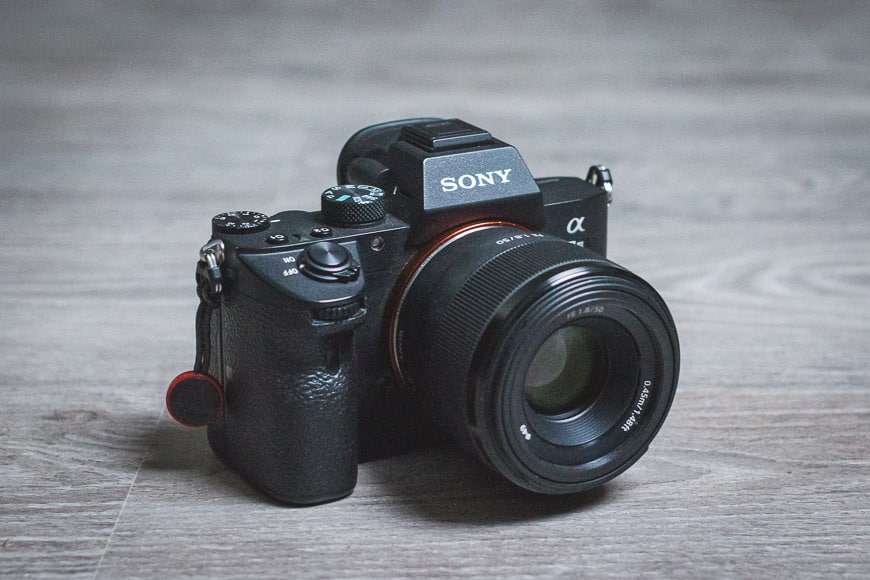
Credit: Andy Day
Sony FE 90mm Macro (Best All-Around)
With a 90mm focal length, 1:1 magnification, and an aperture of f/2.8, this is a great all-round product photography choice for Sony mirrorless camera users.
The quality of its images is sharp, detailed and vibrant.
Plus, you have in-built image stabilisation for that extra peace of mind and a focus hold button for extra precision.
Sony FE 24-105mm F4 G (Most Versatile)
Another versatile lens, this time for Sony, which will allow you to capture crisp shots whether you’re shooting wide open or fully extended.
Even though it has an aperture of f/4, with its in-built image stabilisation, you can get sharp, in-focus shots, even shooting handheld.
A note for when you’re shopping around: on Amazon, they are considerably cheaper, and bear in mind there’s no practical difference between the SEL24105G and the SEL24105G/2 (each number merely denotes a different factory).
Sigma 105mm f/2.8 DG DN Macro (Best Budget Prime)
Coming in at just under $800, which is a good price for a macros lens of this quality, this Sigma would be a worthwhile addition to any product photographer’s kit bag.
It’s a fast lens with a 1:1 magnification ratio and great optical quality that produces sharp images with minimal distortion.
It also has a focus limiter, which is extremely useful when photographing products.
FotodioX Pro TLT ROKR Tilt-Shift Adapter + Nikon PC-E Micro 85mm f/2.8D (Best Tilt-Shift Option)
This is an interesting creative pairing that will allow product photographers to get creative.
The f/2.8 lens is nice and fast and is known for producing crisp images, while the tilt-shift adapter allows you to alter perspective and make micro-adjustments to the depth of field.
That gives you complete control over the area of focus and gives you the opportunity to, for example, create miniature effects.
Best Nikon F Lenses for Product Photography
Nikon AF-S 105mm f/2.8G VR Micro (Best Overall)
This lens has in-built image stabilisation and fast, accurate, and quiet autofocus.
The images it produces are sharp.
Amazon is where you’ll find the best price at the time of writing.
Nikon AF-S FX NIKKOR 24-70mm f/2.8 (Best Zoom)
As has been mentioned before in this article, this range of focal lengths is versatile, especially when it has a fixed, fast aperture.
It creates creamy blur and outstanding images with very little chromatic aberration.
Sigma 24-105mm F4.0 Art (Most Versatile)
Another lens that, while not being the fastest, is nevertheless great for product photography thanks to its in-built image stabilisation, and the large focal length it offers.
It has quick, quiet autofocus, and produces sharp images with true-to-life colours.
Sigma 105mm F2.8 Macro (Best Budget Prime)
A 1:1 magnification macro lens with a bright aperture that will help you out in any lighting conditions.
Images are sharp and well-contrasted and punch above the weight of the lens’ price point.
Nikon PC-E Micro 85mm f/2.8D (Best Tilt-Shift Lens)
This lens produces images of great optical quality while giving photographers the creative control and choices that tilt-shift lenses are made for.
It has a maximum magnification of 1:2, which is perfect for photographing products up close.
Canon EF Mirrorless Lenses for Product Photography
Canon EF 100mm f/2.8L Macro (Best Overall)
This is a pro-level piece of high-quality glass with the ideal focal length and exceptional build and optical quality.
It has Canon’s Hybrid Image Stabilisation and also its ultrasonic motor (USM), which means it has very fast, quiet autofocus.
The images it produces are excellent quality, sharp, and well-contrasted.
Canon EF 24–105mm f/4L (Most Versatile)
With its 24-105mm focal range, this is a very versatile lens.
It’s not the fastest of zoom lenses, but with in-built image stabilisation, it should be fast enough for most needs.
It’s a popular choice among Canon shooting product photographers, a true product photography workhorse that offers flexibility paired with great image quality.
Sigma 24-105mm F4.0 Art DG (Best Budget Zoom)
This robust, well-built lens is a good budget choice for Canon shooters.
It has a fixed aperture throughout its generous focal range and in-built image stabilisation that allows you to get sharp shots even when not using a tripod.
Canon EF 85mm f/1.8 (Best Budget Prime)
This 85mm lens is famous among Canon photographers for providing some of the sharpest, most vibrant images out there, and all for a very low price.
With an aperture of f/1.8, it’s also a great low-light performer, which can also be used to create stunning background blur.
Canon TS-E 90mm f/2.8 (Best Tilt-Shift Lens)
The Canon TS-E 90mm f/2.8 offers great image quality and clarity whether the lens is tilted or shifted.
It’s designed for manual focus and for product photographers who both want complete control over their focal points and planes, plus the opportunity to innovate with their compositions.
They don’t come cheap, though, although Amazon is offering some of the best deals at the moment.
Best Fujifilm Lenses for Product Photography
FUJIFILM XF 80mm f/2.8 R LM OIS WR Macro (Best Overall)
This is a macro lens which is one of the best focal lengths for product photography (full frame equivalent of 120mm), and it produces the kind of high-quality images Fuji is known for.
It has 1:1 magnification, in-built image stabilisation, and extremely fast autofocus.
Fujifilm XF 50-140mm F/2.8 R (Most Versatile)
These zoom lenses, with their full-frame equivalent focal range of 76-214mm are extremely versatile lenses for the product photographer.
They have a fixed aperture of f/2.8, which means they have excellent low-light performance, and create nice background blur.
They also have built-in image stabilisation, so no worries about any image shakiness, even at the end of their focal range.
FUJIFILM XF 16-55mm f/2.8 R LM WR (Best Zoom)
This is a good mid-zoom with quick and accurate autofocus and a bright aperture which will help you create images in low light.
Of course, it also produces images with the clarity and delicious colours Fuji is known for.
FotodioX Pro TLT ROKR Tilt-Shift Adapter + Canon TS-E 90mm f/2.8 (Best Tilt-Shift Option)
Another lens and adaptor pairing, this time to let Fuji shooters get that focal and creative control that you can only achieve with a tilt-shift lens.
The Canon lens, as mentioned above, is an excellent piece of glass with unparalleled optics.
Best Olympus & Panasonic Lenses for Product Photography
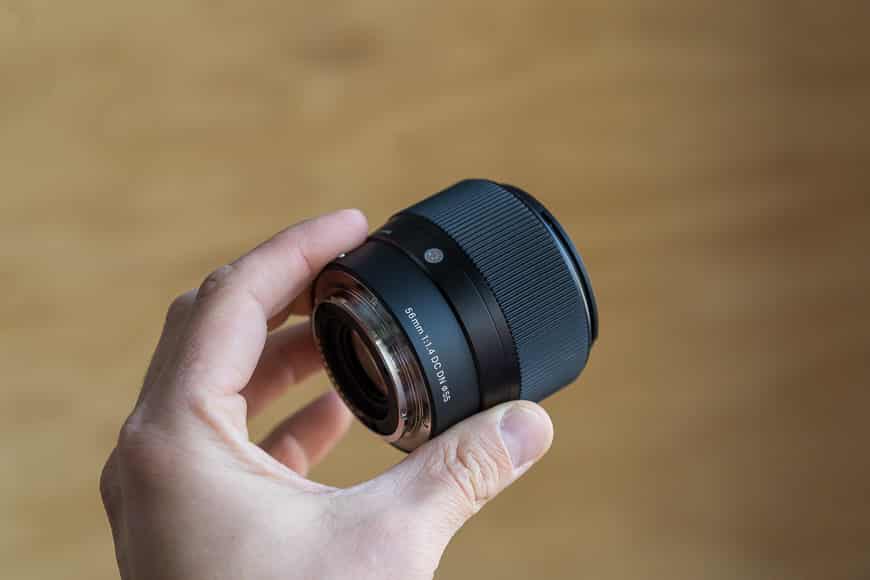
Credit: Marc Bergreen
The Olympus M.Zuiko 60mm f/2.8 Macro (Best Overall)
This lens for micro-four-thirds cameras is equivalent to a full-frame 120mm.
It’s compact and portable and is the ideal focal length for product photography.
It produces sharp images at 1:1 magnification and, thanks to its bright f/2.8 aperture, is good in low light.
PanaLeica DG Vario-ELMARIT, F2.8-4.0 (Best Zoom)
These are versatile zoom lenses which are the full-frame equivalent of 24-120mm.
They are robust and well-built, produce clear images, and boast in-built image stabilisation.
Sigma 56mm F1.4 for Micro 4/3 (Best Fast Prime)
This lens is well-known for its great low-light performance and beautiful bokeh
Thanks to a combination of its focal length (full-frame equivalent of 112mm) and its wide aperture, it’s great for separating subjects (or products) from their background.
Optical quality is outstanding, producing images that are sharp to the edges of the frame.
FAQs on lenses for product photoshoots
What kind of lens is best for product photography?
The ideal lens is a fast prime lens with a wide aperture.
Primes give you minimal distortion, are generally of higher-quality design, and the wide aperture gives you more precise control over the depth of field while allowing you to throw the background out of focus.
What is the best lens for furniture product photography?
First of all, you’ll need to consider the size of the furniture and whether you’ll need to capture only the whole piece or details too.
For shooting a whole piece, you’ll need a wider lens and for details, a macro.
As furniture needs to be shown in true-to-life proportions and perspective, don’t skimp on quality when you choose your lens. You don’t want a lens that produces any distortion.
Do I need a tripod for product photography?
This will very much depend on the parameters of your shoot.
Generally, if you’re in a studio environment and need to capture small products and their details, you’ll need to have your camera on a tripod for more control.
But, if you’re in a particularly well-lit environment and need mobility and flexibility, you could shoot handheld. If you do, you need to make sure your lens is fast enough and has in-built image stabilisation.











